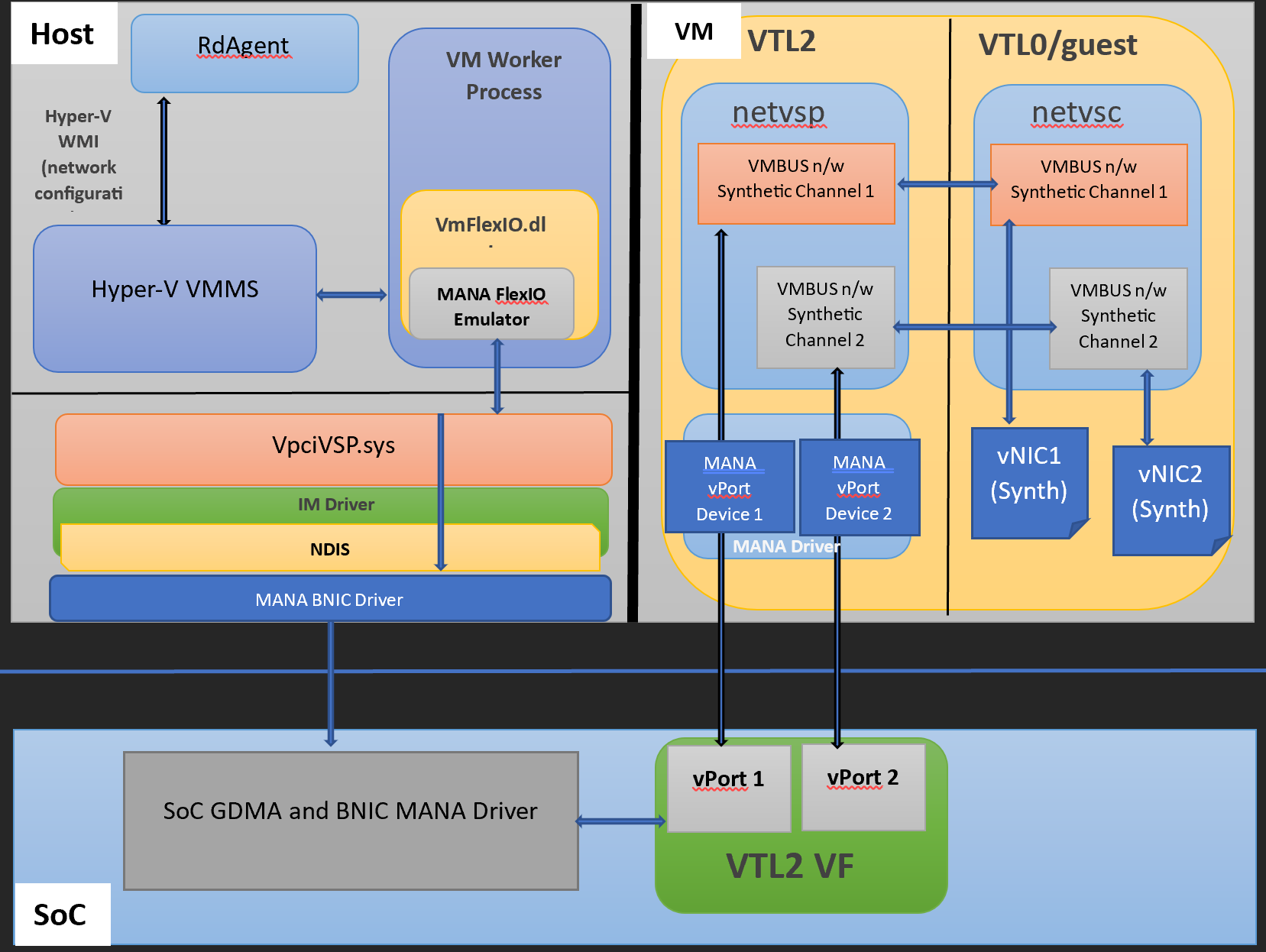OpenHCL Architecture
Prerequisites:
This page is under construction
Overview
The following diagram offers a brief, high-level overview of the OpenHCL Architecture.

VTLs
OpenHCL currently relies on Hyper-V's implementation of Virtual Trust Levels (VTLs) to implement the security boundaries necessary for running OpenVMM as a paravisor.
VTLs can be backed by:
OpenHCL runs within VTL21, and provides virtualization services to a Guest OS running in VTL0.
OpenHCL Linux
By building on-top of Linux, OpenHCL is able to leverage the extensive Linux software and development ecosystem, and avoid re-implementing various components like core OS primitives, device drivers, and software libraries. As a result: OpenHCL provides a familiar and productive environment for developers.
The OpenHCL Linux Kernel uses a minimal kernel configuration, designed to host a single specialized build of OpenVMM in userspace.
In debug configurations, userspace may include additional facilities (such as an interactive shell, additional perf and debugging tools, etc). Release configurations use a lean, minimal userspace, consisting entirely of OpenHCL components.
Scenario: Azure Boost Storage/Networking Translation
Traditionally, Azure VMs have used Hyper-V VMBus-based synthetic networking and synthetic storage for I/O. Azure Boost introduces hardware accelerated storage and networking. It exposes different interfaces to guest VMs for networking and storage. Specifically, it exposes a new proprietary Microsoft Azure Network Adapter (MANA) and an NVMe interface for storage.
OpenHCL is able to provide a compatibility layer for I/O virtualization on Azure Boost enabled systems.
Specifically, OpenHCL exposes Hyper-V VMBus-based synthetic networking and synthetic storage for I/O to the guest OS in a VM. OpenHCL then maps those synthetic storage and networking interfaces to the hardware accelerated interfaces provided by Azure Boost.
The following diagram shows a high level overview of how synthetic networking is supported in OpenHCL over Microsoft Azure Network Adapter (MANA)

The following diagram shows a high level overview of how accelerated networking is supported in OpenHCL over MANA

Why not VTL1? Windows already uses VTL1 in order to host the Secure Kernel.